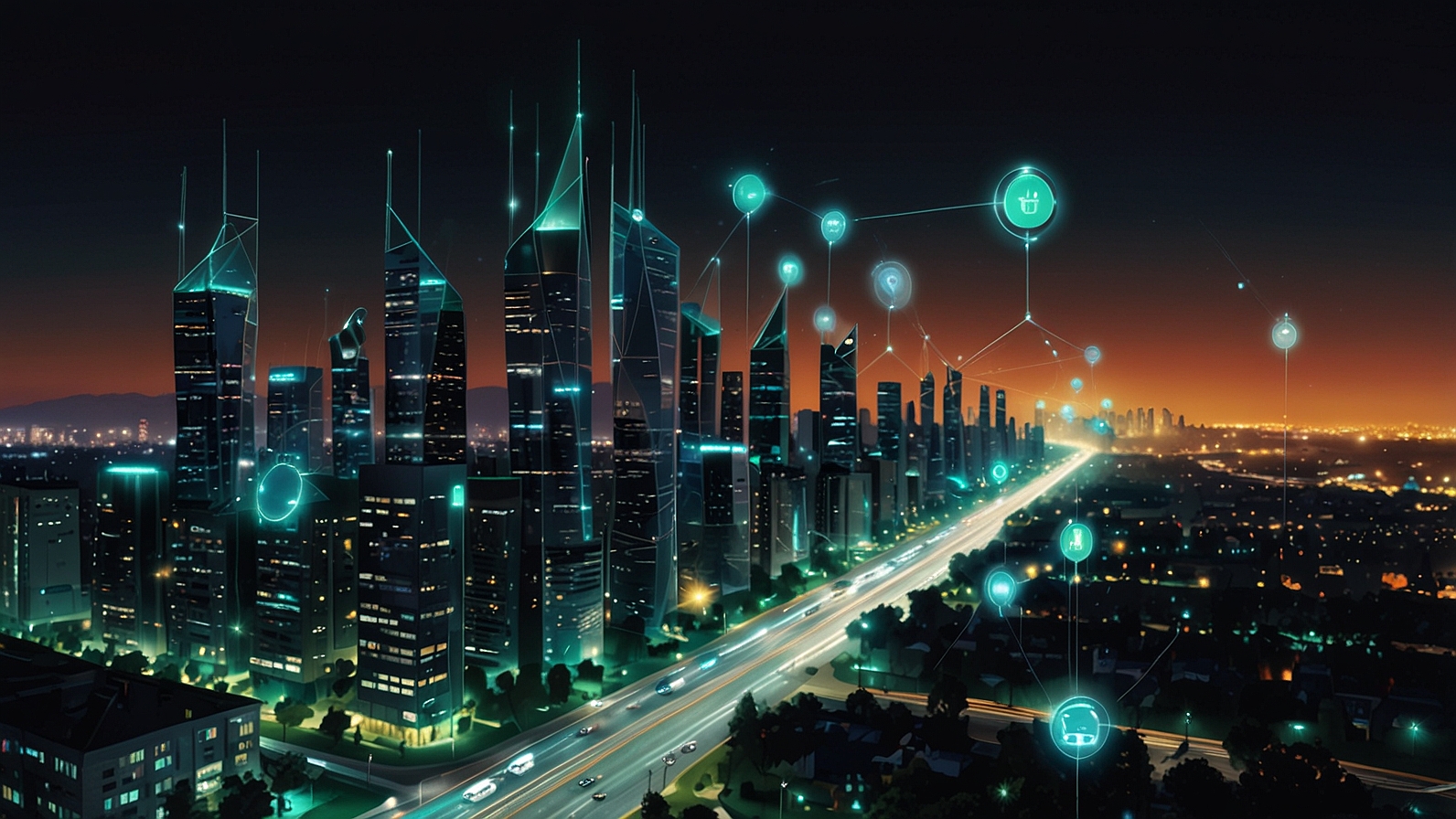The Internet of Things (IoT) is a rapidly growing field that is transforming how we live, work, and interact with technology. By connecting everyday objects to the internet, IoT is making it possible for everything from our homes to entire cities to become smarter, more efficient, and more responsive. In this article, we’ll explore the impact of IoT on our daily lives, including how it is revolutionizing smart homes, urban infrastructure, and even industries across the globe.
What is IoT?
At its core, the Internet of Things refers to a network of interconnected devices that can communicate with each other over the internet. These devices can range from simple household items like refrigerators and thermostats to more complex systems like smart cities and industrial machinery. The key idea is that these devices collect and exchange data, allowing them to work autonomously, optimize performance, and offer users a more personalized experience.
IoT in Smart Homes
One of the most visible applications of IoT is in smart homes. Today’s smart homes are equipped with IoT-enabled devices that allow users to control and monitor almost every aspect of their living space remotely. Smart thermostats, like the Nest Learning Thermostat, can adjust the temperature based on your schedule, ensuring energy efficiency without sacrificing comfort. Similarly, smart lighting systems, such as those from Philips Hue, allow you to control the lights in your home through an app or voice command, enhancing convenience and energy savings.
In addition to convenience, smart home devices also provide increased security. Smart cameras and doorbell systems, such as Ring, allow homeowners to monitor their property from anywhere, receive alerts on suspicious activity, and communicate with visitors remotely. Other IoT-enabled security features include smart locks, motion detectors, and even connected smoke and carbon monoxide detectors that send real-time notifications to your phone.
As these devices continue to evolve, they are becoming increasingly integrated, enabling seamless automation. For example, a smart home system can be programmed to lower the thermostat when you leave for work, turn on the lights as you arrive home, and even start brewing coffee in the morning—all without needing to lift a finger.
IoT in Smart Cities
Beyond the home, IoT is also transforming urban living. Smart cities leverage IoT technology to optimize the infrastructure and services that keep them running. In these cities, sensors and connected devices collect data that is used to improve everything from traffic flow to energy consumption.
For instance, smart traffic lights can adjust their timing based on traffic conditions, reducing congestion and improving the efficiency of transportation systems. Similarly, connected streetlights can dim when no one is around and brighten when pedestrians or vehicles are detected, reducing energy consumption and lowering costs for the city.
Waste management is another area where IoT is having a significant impact. Smart bins equipped with sensors can notify waste management services when they are full, ensuring that trash is collected more efficiently and reducing the environmental impact of waste.
Additionally, IoT devices in smart cities can help monitor air quality, track water usage, and improve emergency response times. The data collected by IoT devices helps city officials make informed decisions about resource allocation, leading to more sustainable and responsive urban environments.
The Industrial IoT (IIoT)
While IoT is most commonly associated with consumer applications like smart homes, it is also making a major impact in the industrial sector. Industrial IoT (IIoT) refers to the use of connected devices and sensors in industries like manufacturing, agriculture, and energy to enhance efficiency, safety, and productivity.
In manufacturing, IIoT-enabled devices can monitor the health of machinery in real-time, predicting maintenance needs and reducing downtime. This predictive maintenance saves businesses both time and money by addressing issues before they become costly problems. Similarly, IoT devices are used in agriculture to monitor soil moisture, weather conditions, and crop health, allowing farmers to optimize irrigation and improve crop yields.
In the energy sector, IoT is being used to enhance the management of renewable energy sources, such as solar panels and wind turbines. Smart grids that incorporate IoT technology enable better monitoring of energy distribution, leading to more reliable and sustainable power systems.
The Future of IoT
As IoT technology continues to evolve, its potential applications are virtually limitless. The integration of AI and machine learning with IoT devices will lead to even smarter systems that can learn from user behavior and make decisions on their own. For example, self-learning smart homes could anticipate your needs and make adjustments without being told.
Furthermore, as 5G connectivity becomes more widespread, IoT devices will become even faster and more reliable. With lower latency and faster data transfer speeds, 5G will enable real-time communication between devices, allowing for even more seamless and responsive IoT systems.
However, the rise of IoT also brings with it challenges, particularly in the areas of data security and privacy. As more devices collect and share personal information, it becomes increasingly important to implement robust security measures to protect user data and ensure the integrity of IoT systems.
Conclusion
The Internet of Things is revolutionizing the way we interact with the world around us. From smart homes that make life more convenient to smart cities that optimize urban living, IoT is improving efficiency, sustainability, and quality of life. As this technology continues to evolve, we can expect even more innovative solutions that will shape the future of both our homes and our cities. The possibilities are endless, and the impact of IoT will continue to expand, making our world smarter and more connected than ever before.
Sources:
- “What Is the Internet of Things (IoT)?” by TechTarget, accessed December 2024.
- “How IoT is Transforming Smart Cities” by McKinsey, accessed December 2024.





